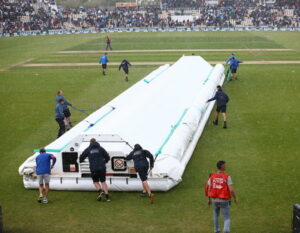 Different sports exhibit varying degrees of susceptibility to weather conditions. Cricket, being an outdoor sport played on a large field, is highly vulnerable to rain and wet conditions, often leading to match cancellations or delays.
Different sports exhibit varying degrees of susceptibility to weather conditions. Cricket, being an outdoor sport played on a large field, is highly vulnerable to rain and wet conditions, often leading to match cancellations or delays.
Golf, tennis and baseball are also heavily affected by rain, as well as lightning, which poses a safety hazard for players and spectators. Horse racing and football are sports that can be impacted by various weather conditions, though tend to be players in most conditions if it is possible for them to go ahead in a safe manner for the participants.
Heavy rain and thunderstorms can render a racecourse or pitch unsafe, leading to postponements or cancellations. Athletics and cycling competitions are generally more resilient, but they may be affected by lightning or heavy rain for safety reasons.
Motorsports, such as Formula 1, face challenges with heavy rain and thunderstorms that affect track conditions and visibility. This doesn’t mean that they’ll be abandoned, but that different approaches to normal might be needed by the drivers if they hope to complete the course safely. The susceptibility of sports to weather conditions varies widely, as we’ll look at here.
Exploring The Various Sports
| Sport | Weather Conditions That Can Cancel/Postpone Matches | Weather Score (1-10) |
|---|---|---|
| Cricket | Rain, heavy downpour, wet outfield | 9 |
| Golf | Lightning, heavy rain, flooding | 8 |
| Tennis | Rain, heavy downpour | 7 |
| Baseball | Heavy rain, lightning | 7 |
| Horse Racing | Heavy rain, thunderstorms, waterlogged track | 7 |
| Football | Lightning, blizzard, heavy rain | 6 |
| Athletics | Lightning, heavy rain | 6 |
| Cycling | Strong winds, heavy rain | 5 |
| Motorsports | Heavy rain, thunderstorms | 5 |
| Sailing | Strong winds, stormy conditions | 5 |
| Rugby | Heavy rain, lightning | 4 |
| American Football | Heavy rain, lightning, blizzard | 4 |
Obviously there are a huge amount of sports when you think about. The Olympic Games alone is responsible for 40 sports, so it would be all but impossible to look at every single sport individually, but we can take a look at some of the more mainstream sports in order to get a sense of how well they respond in various weather conditions. There are some sports that need all but perfect conditions in order for them to take place, whilst others will go ahead unless there is something that would put the safety of its competitors at risk by taking place.
Here is a look at some of the most popular sports, as well as a rough table to give you a sense of how well the sport in question would do depending on the weather conditions that it was asked to take place in:
Looking In More Detail
Now that we’ve offered a table with a sense of how well a sport might do depending on the weather, it is worth taking a closer look at each of the sports in question and seeing how they tend to be affected by the various types of weather that they may encounter.
Cricket
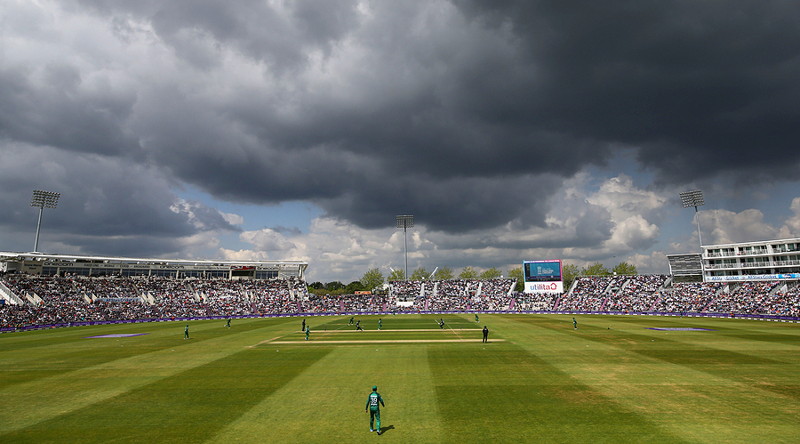
Cricket is a sport highly susceptible to weather disruptions due to its unique playing conditions and reliance on dry conditions. With a weather score of 9, cricket is particularly affected by rain, heavy downpours and wet outfields. The nature of the game requires a dry pitch for optimal play, making it vulnerable to even slight precipitation. Rain delays or cancellations in cricket matches can have a significant impact on the game. If rain occurs during play, the match may be temporarily halted, and the covers are brought on to protect the pitch from getting wet.
The wet outfield makes it difficult for the ball to bounce and move at its usual pace, affecting the balance between bat and ball. If rain persists, the match may be abandoned or rescheduled for another day, disrupting the tournament schedule and causing logistical challenges. Cricket matches can also be delayed or called off due to poor light conditions caused by overcast skies, fog or bad visibility. In such cases, umpires may halt the play or suspend it until the conditions improve, affecting the momentum of the game. This is why it is considered to be a summer sport.
To combat weather disruptions, cricket stadiums have implemented measures such as covering the pitch and using super-soppers to quickly remove water from the outfield. In some cases, stadiums are equipped with drainage systems to help recover from rain quickly. The scheduling of cricket matches also takes into consideration the weather patterns in different regions, with certain times of the year preferred for hosting matches in areas prone to rainfall. In Australia, for example, the weather is usually best during British winter, which is why the Ashes takes place there during the winter time.
Golf
 Golf, like cricket, is another sport highly susceptible to weather disruptions due to its outdoor nature and specific playing requirements. With a weather score of 8, golf can be affected by various weather conditions that can significantly impact gameplay. Rain is one of the primary weather factors that can disrupt golf tournaments. Heavy rainfall can saturate the golf course, leading to waterlogged fairways and greens. This makes it challenging for players to make accurate shots and can result in delays or even cancellations of matches. In some cases, tournaments may be shortened or rescheduled due to persistent rain.
Golf, like cricket, is another sport highly susceptible to weather disruptions due to its outdoor nature and specific playing requirements. With a weather score of 8, golf can be affected by various weather conditions that can significantly impact gameplay. Rain is one of the primary weather factors that can disrupt golf tournaments. Heavy rainfall can saturate the golf course, leading to waterlogged fairways and greens. This makes it challenging for players to make accurate shots and can result in delays or even cancellations of matches. In some cases, tournaments may be shortened or rescheduled due to persistent rain.
Strong winds are another weather element that can have a significant impact on golf. Gusts of wind can alter the trajectory and distance of the ball, making it difficult for players to gauge their shots accurately. Additionally, high winds can affect the stability of the golf course infrastructure, such as tents and scoreboards, posing safety concerns for players and spectators. Extreme weather conditions such as thunderstorms, lightning, and heavy fog also pose risks in golf. When lightning is detected in the vicinity, players and officials are required to suspend play and seek shelter until it is safe to resume.
Fog can limit visibility, making it unsafe for players to navigate the course and accurately judge distances. Golf courses employ various strategies to combat weather disruptions, such as having advanced drainage systems to help remove excess water quickly and minimise course saturation. Additionally, meteorological technology is utilised to monitor weather patterns and provide early warnings for impending storms or lightning threats, ensuring the safety of players and spectators. It isn’t so much that golf will be cancelled because of weather, but conditions can vastly alter how a game plays out, which is why Links courses are so popular in the UK.
Tennis
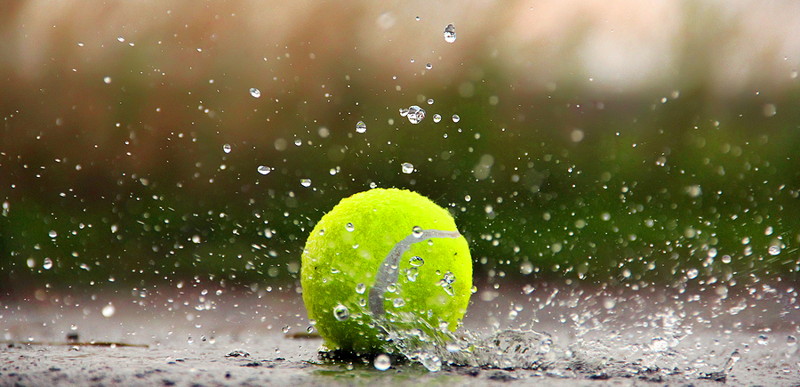
Tennis, being an outdoor sport, is also susceptible to weather disruptions that can impact matches and tournaments. With a weather score of 7, tennis can be affected by various weather conditions, leading to delays, suspensions or even cancellations of matches. Rain is one of the weather factors that is most likely to disrupt tennis tournaments. When rain falls, the tennis courts become slippery, making it dangerous for players to move and increasing the risk of injuries. As a result, matches are often suspended until the rain stops and the courts can be dried.
Extreme heat is another weather element that can affect tennis. High temperatures can be physically demanding for players, leading to exhaustion, dehydration and even heatstroke. In some cases, matches may be postponed or rescheduled to cooler times of the day to ensure the well-being of the athletes. Strong winds can also impact tennis matches, making it challenging for players to maintain control and accuracy in their shots. In such cases, the tournament organisers may decide to halt play until the wind subsides to ensure fair and safe conditions for both players.
Tennis tournaments employ various measures to combat weather disruptions. Covered stadiums or retractable roofs are common features in major tennis venues, allowing matches to continue despite rain. The most obvious example of this is at Wimbledon, where a roof was put on both Centre Court and No. 1 Court in order to allow play to continue after a short break to close the retractable roof during adverse weather. Some time is taken to allow the nature of the conditions inside the court to normalise in order to stop things like condensation causing players to slip.
Baseball
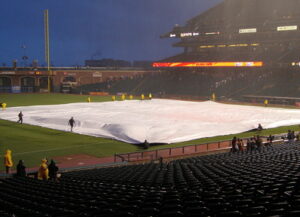 Baseball, an outdoor sport played on a vast field, is not impervious to the whims of the weather. With a weather vulnerability rating of 7, baseball can encounter various atmospheric conditions that can significantly impact games and tournaments. As with most sports played outdoors, rain is a primary meteorological factor that can disrupt baseball. When precipitation descends upon the field, it renders the playing surface slippery and unsafe for players. Consequently, matches are frequently delayed or suspended until the rain subsides and the field can be prepared for play.
Baseball, an outdoor sport played on a vast field, is not impervious to the whims of the weather. With a weather vulnerability rating of 7, baseball can encounter various atmospheric conditions that can significantly impact games and tournaments. As with most sports played outdoors, rain is a primary meteorological factor that can disrupt baseball. When precipitation descends upon the field, it renders the playing surface slippery and unsafe for players. Consequently, matches are frequently delayed or suspended until the rain subsides and the field can be prepared for play.
Extreme heat and scorching temperatures can also pose challenges in baseball. High heat levels can drain players’ energy and increase the risk of heat-related illnesses. In such circumstances, games may be rescheduled or postponed to cooler hours of the day to ensure the well-being of the athletes. This is obviously a factor that can often cause problems in baseball’s home country of the United States of America. It is also worth mentioning wind and thunderstorms, the latter of which poses a safety concern and the former of which can make it difficult for batters to hit the ball.
To mitigate weather-related disruptions, baseball stadiums often employ a number of different strategies. Some venues have retractable roofs, allowing games to proceed uninterrupted regardless of rain or extreme heat. Additionally, technology and forecasts aid in predicting adverse weather conditions, enabling teams and officials to make informed decisions regarding game schedules and adjusting things as and when they need to in order to ensure that the weather will impact the outcome of games as little as possible.
Horse Racing
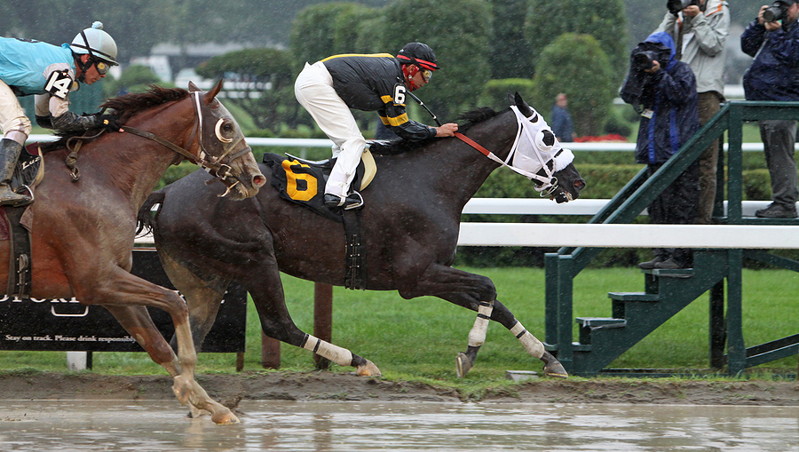
Horse racing, an equestrian pursuit of swiftness and grace, is not exempt from the caprices of the weather. With a weather susceptibility rating of 7, horse racing can encounter a range of meteorological conditions that may impede or alter the course of races. Rain can transform the racing track into a treacherous terrain for both horses and jockeys. The waterlogged surface hampers traction, jeopardising the safety and performance of the majestic steeds. When rain falls persistently, race meetings can be postponed or cancelled to preserve the integrity of the sport and the well-being of the horses. This is most common in flat racing.
Jump racing, of course, tends to be well-placed to cope with bad weather, with frost being one of the main issues on that front. When the ground is too hard, it is dangerous for the horses to land on the turf and so racing needs to be postponed. Extreme heat, when the sun’s fiery gaze scalds the earth, also casts its shadow upon horse racing. The scorching temperatures can cause distress to both horses and riders. In such circumstances, races may be rescheduled or conducted during cooler hours to safeguard the equine athletes as well as those riding them.
Efforts to mitigate weather-induced challenges in horse racing include employing track maintenance practices to counteract adverse conditions. Racing authorities always look to prioritise the well-being of horses and jockeys, striving to strike a balance between the thrill of competition and the safety of all involved. Whether the specific racing type being run will be affected by the weather will depend on both what the weather is and also whether it is jump racing or flat racing taking place. All-weather circuits now exist in order to offer the chance of racing irrespective of the weather.
Football
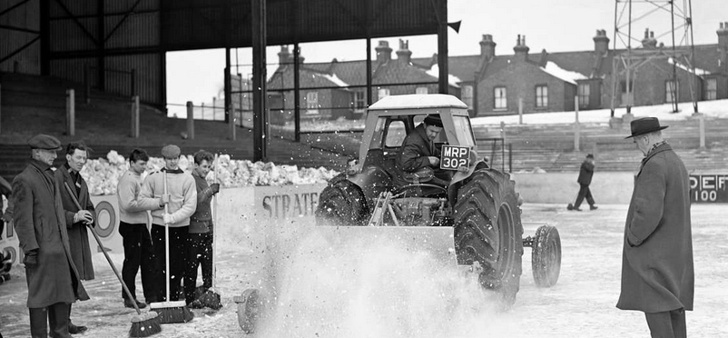
When it comes to a sport’s susceptibility to bad weather, it really depends on what you mean. Is it that the sport has to be cancelled altogether, or is it that how the game is likely to play out is affected? Football is perfect example of this, given the fact that very few weather types will actually result in a match being called off. That, of course, depends on the level that you’re looking at, with the likes of the Premier League more than capable of being able to handle heavy rainfall due to the excellent drainage conditions that are in place at the majority of stadiums.
Of course, even Premier League stadia will struggle to cope with heavy fog. As soon as the players and the supporters are likely to struggle to see the ball, it isn’t right for matches to go ahead. There have been numerous fixtures around the world that have been cancelled because of frost making it dangerous for the players to take to the pitch. There have also been plenty of examples of heat stopping football matches from taking place as usual, with particularly hot summers leading to water breaks being introduced to matches to give players a chance to get liquid on board.
When it comes to trying to deal with poor weather, football stadiums have installed good drainage and undersoil heating as two major deterrents to bad whether stopping games. There are some stadia that have seen retractable roofs installed, whilst when the World Cup was hosted in Qatar the stadiums there were built with their ability to cope with the heat of the country in mind first and foremost. Ultimately, it is about supporters being able to see what’s taking place on the pitch and the players being safe. If either of those things are in question then games won’t go ahead.
Athletics
 When examining the impact of weather on athletics, one must consider the various aspects affected by different weather conditions. Weather’s influence on athletics can encompass both the safety of the athletes and the performance outcomes of their endeavours. In terms of cancelation, athletics events are rarely called off solely due to weather conditions. Rain, though it can affect track conditions, is generally not a hindrance. Athletics venues often boast excellent drainage systems, allowing competitions to proceed even in wet conditions. However, heavy rain accompanied by thunder and lightning may prompt organisers to think about the safety of athletes and spectators.
When examining the impact of weather on athletics, one must consider the various aspects affected by different weather conditions. Weather’s influence on athletics can encompass both the safety of the athletes and the performance outcomes of their endeavours. In terms of cancelation, athletics events are rarely called off solely due to weather conditions. Rain, though it can affect track conditions, is generally not a hindrance. Athletics venues often boast excellent drainage systems, allowing competitions to proceed even in wet conditions. However, heavy rain accompanied by thunder and lightning may prompt organisers to think about the safety of athletes and spectators.
Extreme heat poses a significant challenge for athletes. Endurance-based events, such as marathons and long-distance races, become even more gruelling in scorching temperatures. Organisers may adjust start times or implement additional hydration stations to mitigate the risk of heat-related illnesses. In cases of extreme heat, officials may even consider shortening the race distances or modifying the competition schedule. On the other hand, extreme cold presents its own set of difficulties. Freezing temperatures can hinder an athletes’ muscle performance and increase the risk of injuries. Organisers may provide heated tents or allow athletes additional warm-up time to counteract the cold’s impact.
When it comes to the locations in which athletics events take place, they all tend to be somewhat open to the weather. There are some things that can be done to mitigate the impact of weather, including the likes of track surfaces being designed to withstand virtually all weather conditions, as well as solid drainage systems. Many athletic venues have built-in features to protect athletes and spectators from adverse weather, which can include retractable roofs, canopies or covered seating areas that shield participants and spectators from rain, intense sun or extreme heat.
Cycling
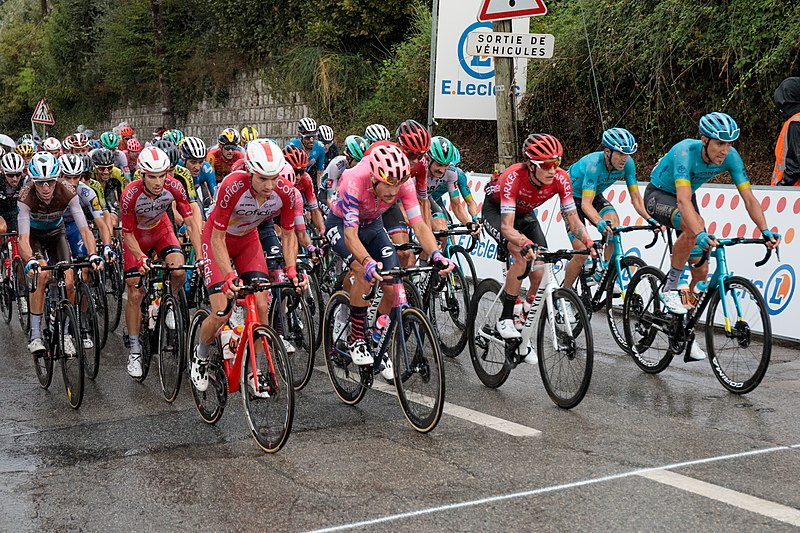
Weather plays a significant role in cycling and can have a profound impact on the sport and its participants. Wind speed and direction greatly affect a cyclist’s performance. Strong headwinds can slow down riders and make it more challenging to maintain speed, whilst tailwinds can provide a significant advantage by increasing speed and reducing effort. Crosswinds can be particularly tricky, as they require cyclists to adjust their positioning and technique to maintain stability. Meanwhile, wet roads and rain can make cycling more hazardous. Rain reduces traction, making it easier for riders to lose control and potentially leading to accidents.
Cold weather can pose challenges for cyclists, particularly in terms of maintaining body heat and avoiding hypothermia. Cyclists may need to wear additional layers of clothing, such as thermal jerseys and windproof jackets, to stay warm. Cold temperatures can also affect tire traction and increase the risk of crashes on icy or slippery surfaces. Cyclists who compete in mountainous regions may encounter various climatic conditions, such as snow, fog or mist. These conditions can affect visibility and road conditions, requiring cyclists to adapt their riding style and technique accordingly.
The fact that cycling events typically take place on areas like roads means that there isn’t a lot that can be done to mitigate for the impact of weather on events. They are unlikely to be postponed or cancelled unless it is likely that someone will be in danger as a result of the event carrying on as normal. Experienced cyclists learn to adapt their strategies and techniques to cope with different weather scenarios, whilst event organisers closely monitor weather forecasts to ensure the safety of participants and make necessary adjustments to races when needed.
Motorsports
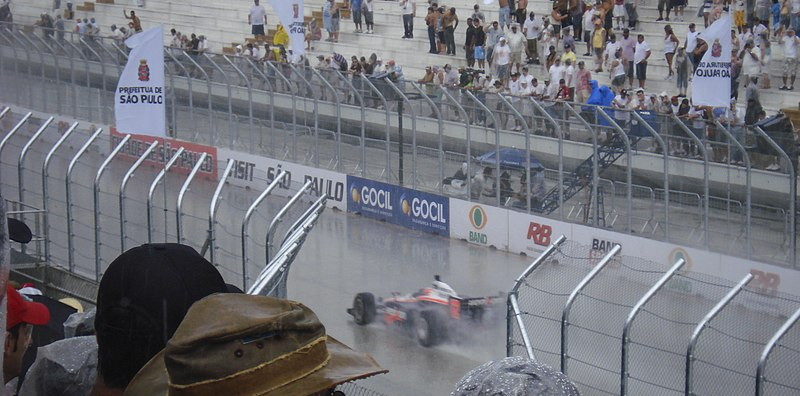
There are certain things that will have a major impact on motorsports, but few that will lead to a race being called off altogether. As with so many sports, rain is one of the main weather conditions that will alter how a race is run. Rainy conditions greatly impact motor sports, particularly in disciplines like Formula 1, MotoGP and NASCAR. Wet tracks reduce tire grip and increase the risk of accidents due to decreased traction. Rain also affects visibility, making it more challenging for drivers to see the track and other competitors. In response, drivers may need to change to wet-weather tires and adjust their driving techniques to navigate slippery surfaces.
If you have watched any F1 or the likes of Drive To Survive on Netflix, you will no doubt be aware of just how much of an influence on the outcome of a race different tires can have. Another thing that needs to be borne in mind by the drivers and their teams is Thick fog or mist, which can severely impact visibility on the track, posing a significant safety risk for drivers. Motor sports events may be delayed or cancelled if visibility is compromised to ensure the safety of competitors. The various weather types will result in different strategies being used by the teams that are responsible for getting their drivers home safely.
To mitigate the effects of weather, motor sports venues may have advanced drainage systems to handle rainwater and safety protocols are implemented to ensure the well-being of drivers and spectators. Weather monitoring technology and expert meteorological analysis play a crucial role in helping teams and event organisers to make informed decisions regarding safety and race strategies based on current and forecasted weather conditions. As mentioned, though, the tyres that are used will be amongst the most important things to combat various weather types.
Sailing
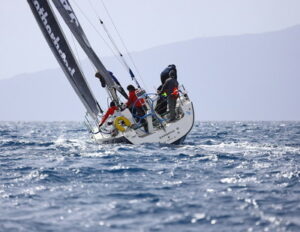 There are few sports that require specific weather in order to be at their best, but sailing is definitely one of them. The weather directly impacts the conditions and challenges that sailors face on the water, with wind being arguably the most important factor, on account of the fact that it is the primary element that drives sailing. Its speed, direction and stability greatly influence the tactics and strategies employed by sailors. Different wind conditions require different sail settings and manoeuvres. Light winds can be challenging as they may require precise sail trim and tactical decision-making to maintain boat speed, for example, whilst strong winds can provide thrilling speed but also increase the risk of capsizing or equipment failure.
There are few sports that require specific weather in order to be at their best, but sailing is definitely one of them. The weather directly impacts the conditions and challenges that sailors face on the water, with wind being arguably the most important factor, on account of the fact that it is the primary element that drives sailing. Its speed, direction and stability greatly influence the tactics and strategies employed by sailors. Different wind conditions require different sail settings and manoeuvres. Light winds can be challenging as they may require precise sail trim and tactical decision-making to maintain boat speed, for example, whilst strong winds can provide thrilling speed but also increase the risk of capsizing or equipment failure.
Weather conditions, particularly wind strength and duration, determine the size and nature of waves and swells on the water. Large waves can make sailing more physically demanding, increase the risk of capsizing and affecting the boat’s stability. Sailing in heavy seas requires skilled boat handling and adaptability to maintain control and prevent damage to the vessel. Currents and tides, influenced by lunar and weather patterns, impact sailing by affecting boat speed and course. Understanding these natural water movements is important for efficient navigation, especially during races or when navigating tight passages.
Realistically, there are few weather conditions that will actively lead to a sailing event being called off altogether. That being said, storms, including thunderstorms and tropical systems, pose significant risks to sailors. Lightning, strong winds and heavy rain can create dangerous conditions on the water. Monitoring weather forecasts and radar helps sailors avoid or navigate around these hazardous weather systems wherever possible. Understanding and adapting to the ever-changing weather conditions is a fundamental aspect of successful and safe sailing, which is why most sailors are so good at it.
Rugby
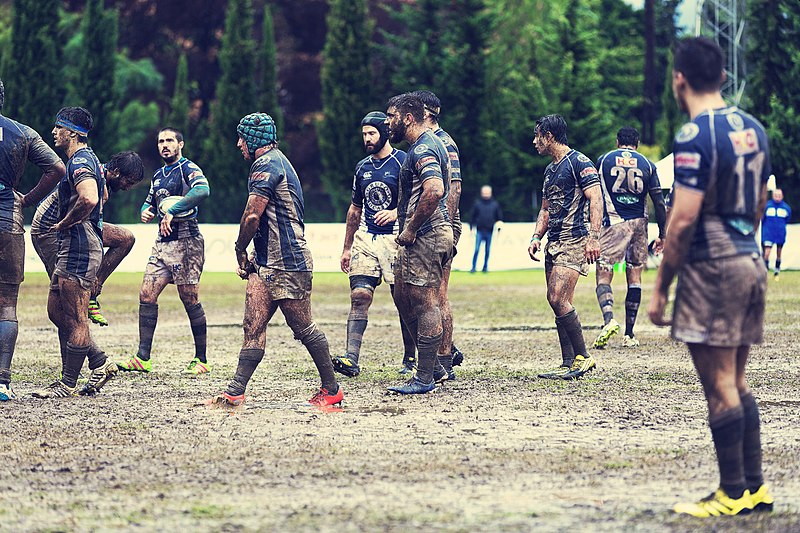
Realistically, rugby is one of the sports that is most able to withstand adverse weather. It is designed to be played in various weather conditions and teams are expected to adapt their strategies and tactics accordingly. However, extreme weather conditions that pose a risk to player safety or make the game impractical may lead to a match being rescheduled or cancellation. Heavy rain can make the field wet and muddy, affecting the players’ footing and their ball handling. It can lead to slippery conditions, making it challenging to maintain stability and balance while running, passing or kicking. Rain can also affect the ball’s trajectory and bounce, adding an element of unpredictability to the game.
Cold weather can impact player performance and the ball’s handling just as rain can. Lower temperatures can affect muscle flexibility, making movements and tackling more challenging. Cold hands can make it harder to catch and pass the ball accurately. Additionally, colder conditions may require players to wear additional layers of clothing to stay warm, which can restrict movement to some extent. On the other hand, Hot and humid conditions can result in players experiencing fatigue more quickly, leading to a higher risk of dehydration and heat-related problems. Players need to manage their energy levels and stay adequately hydrated to maintain performance throughout the match.
Extreme weather conditions like snow and ice can render the field unplayable or unsafe. In such cases, matches may be postponed or cancelled due to player safety concerns. As with football, if it becomes too foggy for the spectators or the players to see one another then the likelihood is that the game won’t go ahead as planned. Whilst good drainage and undersoil heating can help to stop rain and frost from impacting rugby, there isn’t a huge amount that can be done about fog and mist.
American Football
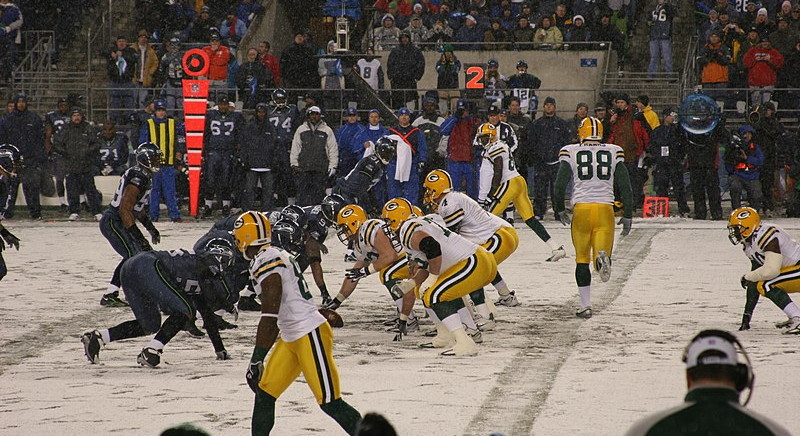
As with the likes of football and rugby, weather can have a significant impact on American football due to the sport’s reliance on outdoor playing fields. Wet conditions, for example, can make the field slippery, resulting in players having difficulty with their footing and potentially causing more slips and falls. It can also affect their grip of the ball, making it harder to throw and catch accurately. Rain can also lead to a heavier, waterlogged ball, which can affect its trajectory and make it more challenging to handle. Quarterbacks may struggle to accurately throw the ball downfield or adjust their passes due to strong wind, whilst kickers may find it challenging to judge the distance and accuracy of their kicks.
In some cases, severe weather conditions such as lightning storms or blizzards may lead to game delays, rescheduling or even cancellations in order to ensure player safety. There is almost no type of weather than won’t impact American football in some way, such as extreme heat leading to dehydration, or snow and ice causing players to slip as well as potential muscle injuries. Despite the challenges posed by different weather conditions, American football is known for being played in a variety of environments. Teams are expected to adapt their strategies and play styles accordingly, taking into account the impact of weather on the game.
When it comes to the venues where American football matches are played, they tend to boast the same weather-combatting abilities as football stadiums and the like. That is to say, you can expect excellent drainage and undersoil heating in order to stop heavy rain or frost from interfering with play, whilst some of the stadia around the United States will have the ability to close the roof if needs be.